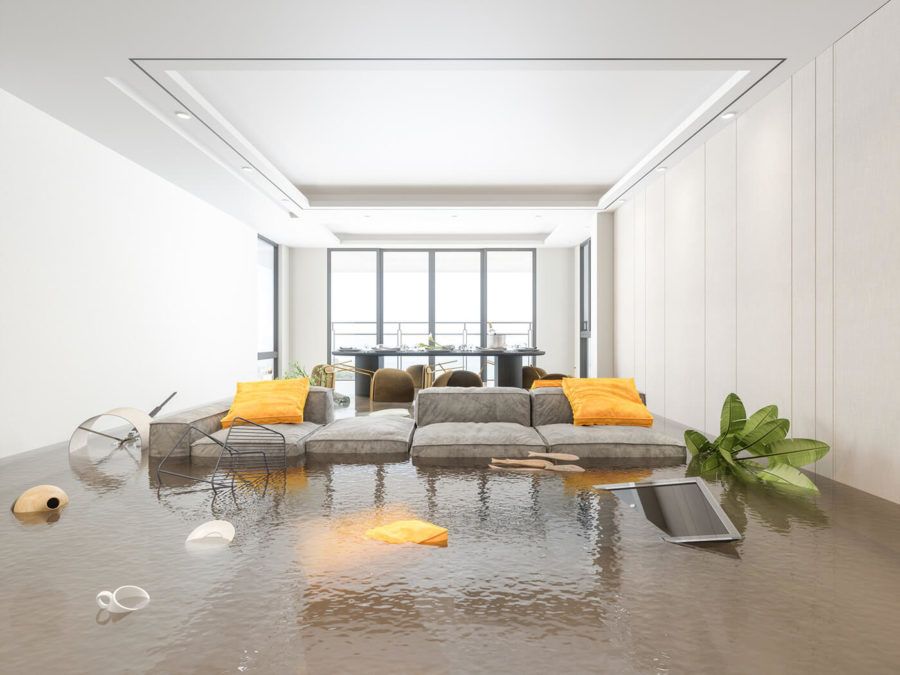In this article:
Damage caused by natural disasters can be costly to repair and often isn't covered by your homeowners insurance policy. If you live in a flood-prone area, an additional flood insurance policy could help protect you from expensive damage, and it may even be required by your mortgage lender.
Whether you need flood insurance will depend on several factors, including the location of your home, lender requirements and your tolerance for risk. Read on to learn how flood insurance policies work, and how to decide if getting one is right for you.
How Does Flood Insurance Work?
Just one inch of water can cause more than $25,000 in damage to your home, according to the Federal Emergency Management Administration (FEMA). And since damage from flooding is not covered by homeowners insurance, the lack of flood insurance could mean paying for expensive repairs out of pocket.
Flood insurance works like a regular homeowners insurance policy. In the event of a flood, your policy will pay for damage to both your property and your belongings up to certain coverage limits. These limits are determined by your insurance provider and will be established alongside your premium and deductible costs when you sign up.
The National Flood Insurance Program (NFIP) administered by FEMA backs over 5 million insurance policies offered by private insurers throughout the country. The following are details of coverage for buildings (your property) and building contents (your belongings) offered through the NFIP:
- Building coverage is offered up to $250,000. Covered items include:
- Electrical and plumbing systems
- Furnace and water heater
- Kitchen appliances
- Permanently installed carpet, cabinets, paneling, bookcases and blinds
- Foundation walls and staircases
- Coverage for property contents is offered up to $100,000. Covered items include:
- Personal belongings (clothes, furniture, electronics)
- Washer/dryer and portable appliances
- Valuable items like art
If you file a claim, you'll be required to pay your deductible. Like your homeowners insurance policy, a deductible is paid each time you file a claim. In addition to your annual premium—which you pay monthly—the deductible is the other main cost associated with your flood insurance policy. Depending on where you live, you may be required to have a flood insurance policy. If it's not a requirement, whether you get flood insurance can depend on your budget, your tolerance for risk and other factors. Flood insurance can offer peace of mind and protection even if you live in a moderate- to low-risk zone, as FEMA reports that 1 in 3 insurance claims come from people living in lower risk areas. Whether you're required to get flood insurance can depend on what flood zone your home is in. If you live in a high-risk zone and have a federally backed mortgage, a policy may be required. If you live in a moderate- or low-risk area, the decision is usually up to you. You can use FEMA's flood map to find out what zone your home is in. But not all homes in high-risk zones are required to have flood insurance policies. If you're not required to have it, and are on the fence about whether you want to purchase additional coverage, consider your home's elevation and where your property is relative to a body of water. Additionally, look for any evidence that your property or neighborhood has flooded in the past. There is always a possibility of flooding in high-risk areas, but an individual evaluation of your property could help you make up your mind about getting a policy. People in low-risk areas should take all of these things into consideration as well and should regularly check to ensure their area hasn't become a high-risk zone. FEMA's flood maps are continually updated, and a change in weather patterns or local infrastructure could impact an area's risk designation. The price of flood insurance is determined by many things, including where your home is located, how it was built and what protections it might have in place. People in high-risk zones will pay more than those in moderate- to low-risk zones. And those who own property built with flooding in mind (with basements that have proper drainage and elevated utilities) may pay less than others. Here are a few of the main things that will be considered in pricing your annual premium: The average flood insurance policy cost $700 last year, according to FEMA, making flood insurance one of the more affordable supplemental policies. Depending on what risk area you live in, you may be able to lower your premium by taking a few key steps to mitigate your risk, including the following: Flood insurance is offered by many private insurers as an add-on option or standalone policy. FEMA also offers a flood insurance option through the NFIP that you can purchase through private insurers—like Farmers, GEICO and Allstate—and insurance agents. Remember that private insurers will likely be able to offer higher coverage options than policies insured through the NFIP. If your home is worth more than $250,000—the NFIP coverage limit for property damage—you may want to chat with a private insurer to see if they can offer you increased coverage to protect your home. Check with your current homeowners insurance provider to see if they offer add-on policies or standalone plans you can purchase. If your provider doesn't offer flood insurance, contact a local insurance agent or insurance company to shop for rates in your area. You can use this FEMA tool to help you find local providers that offer flood insurance through the NFIP in your area. As always, shop around with different providers before locking in a policy so you can make sure you're getting the best deal possible. How to Decide if You Need Flood Insurance
How Much Does Flood Insurance Cost?
Where Can You Get Flood Insurance?

